To obtain the study notes including all Scriptures references for this video, go to https://hoshanarabbah.org/blog/2022/02/26/a-tour-of-the-tabernacle-of-moses-revealing-the-way-to-yhvh-elohim-in-heaven/. To find more comprehensive articles on the Tabernacle of Moses, go to https://www.hoshanarabbah.org/teaching.html#tabernacle. To access all our videos on the Tabernacle of Moses, go to https://www.youtube.com/playlist?list=PL5EzE5DQnrHdQZElQKo70hpY9b4a4dqOb.
Category Archives: Gospel Message/Salvation
A Tour of the Tabernacle of Moses—Revealing the Way to YHVH Elohim in Heaven
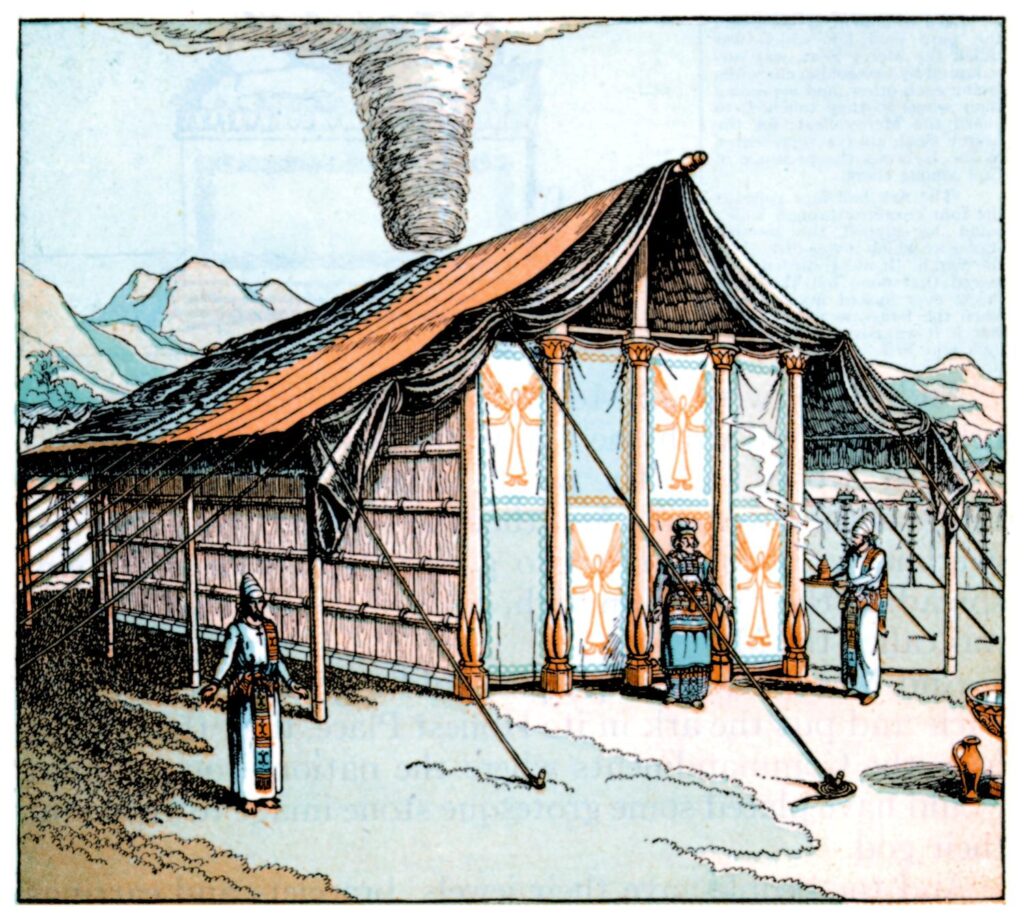
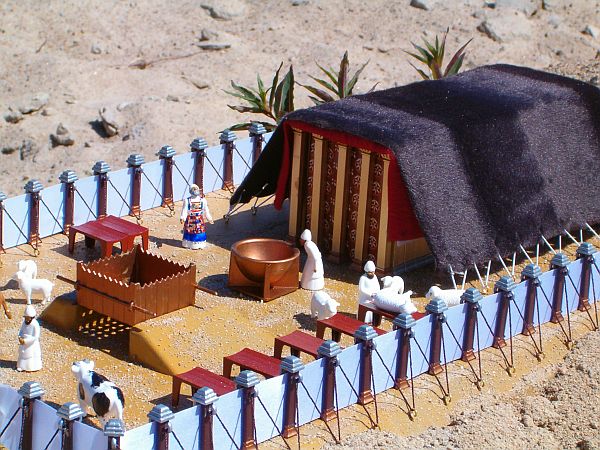
The Tabernacle of Moses was literally a three-dimensional gospel message tract. It is the visual demonstration of the whole message of the Bible in a building—the blueprint of the plan of redemption of wayward man. It was a functioning masterpiece of artwork demonstrating the Father’s love for his people, of his desire to commune and to communicate with Israel—his treasured possession, those he had hand picked and called out from the 70 nations of the world. Not only did the tabernacle involve the sense of sight, but the other four senses as well: sound, smell, touch, and taste. It also engaged and even challenged the heart, emotions, mind and spirit of man. The Tabernacle of Moses was a vehicle for the Creator of the universe to communicate with man using a panoply of communicative devices all of which pointed to the coming Messiah, the Redeemer of mankind who would die for the sins of the world to restore man into a loving relationship with his ever-loving, gracious, and longsuffering Father in heaven.
The Altar of the Red Heifer (Num 19:1–11)
The altar of the red heifer is where our journey through the Tabernacle of Moses begins; no! Rather this is where our journey toward the throne room of heaven begins, which is the very presence of the Almighty Creator of the universe. His name is Yehovah Elohim, and his arms are open wide to receive you, if you know the way to him.
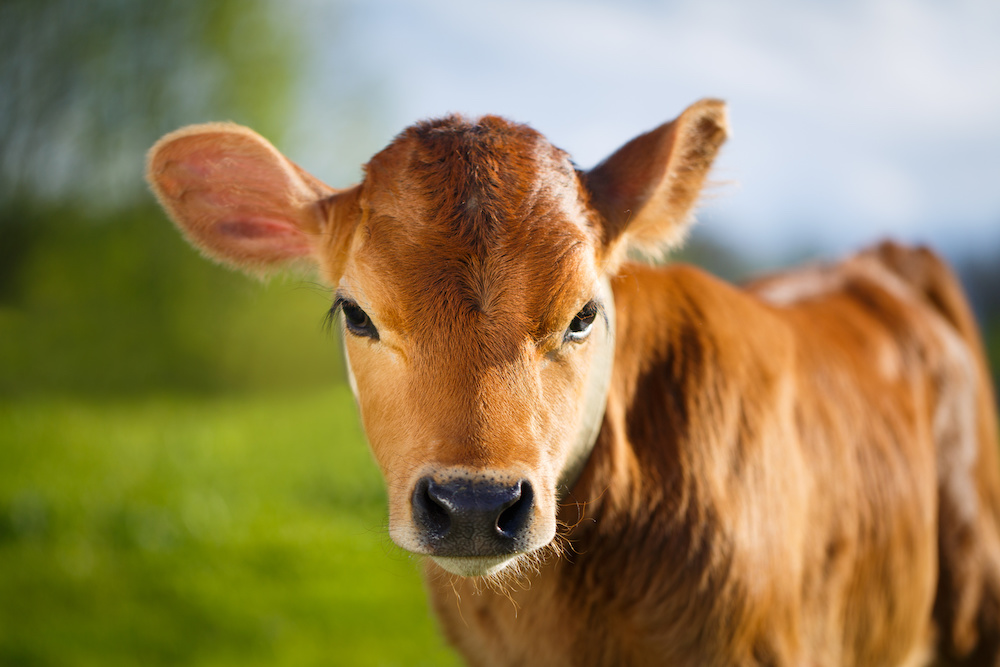
This altar is the very spot where the earthling and the finite reaches out a feeble and virtually helpless arm skyward toward the infinite—the supreme Creator of all. Where a small, weak child extends his scrawny arms up to his all-powerful and all-loving Father, who towers above him, his head reaching into the clouds, or so it seems. This is the first of many steps that a mortal being takes as he or she begins to hearkens to and attunes their mind and heart to the flickering spirit deep inside their innermost depths. This is where the human begins to awaken to his deepest yearnings to know where he came from, why he is alive, where he is going, the meaning of life, his purpose and destiny, and, most importantly, to satiate the thirst and the intense desire to live forever—yea! to somehow achieve immortality.
So what is this all-important geographical spot where the One who has all power, who gave the gift of life to each human, and who long ago established and prescribed the one and only path that one must follow if they want to find themselves and, ultimately, to find him? It is at this spot where heaven demands that each person lose it all to gain it all; to lose himself or herself to find themselves; to become poor that one might become rich; yes, and to die that one might live.
This place of transaction is a literal altar where something and, eventually, Someone died so that you and I might live forever in the glorious, ethereal and supernal Presence of YHVH Elohim, the Creator of us all. And the Tabernacle of Moses shows us the way.
Thirty-five hundred years ago when YHVH instructed the children of Israel to build a glorified tent called the Tabernacle of Moses where he might dwell among them, lead and guide them into a special relationship with him, he also instructed them to build an altar in a special place outside that tabernacle. This is the place that those who would enter the tabernacle would first be required to visit to be cleansed and purified in order to come into the tabernacle. They had to be cleansed of any filth that prevented them from coming into the presence of their holy or pure and perfectly righteous Creator. That is to say, each person had to deal with the sin in his life. This was the transaction that each one had to make before taking another step heavenward, so to speak. They had to acknowledge their sinfulness, repent of that sin, and then be cleansed or pardoned of that sin. There was no other way to gain a ticket, so to speak, to go inside.
The ritual on this altar involved the sacrifice of a perfectly spotless red heifer cow that symbolized innocence or sinlessness. Those who were chosen to minister before YHVH in the tabernacle had to then take the ashes from the heifer that was sacrificed as a burnt offering, mix it with water and then be ritually purified by this lye water. Lye is found in ashes and, interestingly, was, in former times, the major cleansing agent traditionally used in soap. YHVH prescribed and accepted this cleansing ritual as a suitable precursor to initiate his servants, the Levites, to minister before him in the Tabernacle.
But this red heifer ritual was not an end all. Like everything in the Tabernacle of Moses, and like a sign on a highway that gives the number of miles to your destination, this ritual prophetically pointed to something or, more accurately, to Someone who was yet to come who would ultimately cleanse humans from their sins once and for all. Can you now see where this is going?
That Person was Yeshua the Messiah, and the spot was where he was crucified for the sins of all those who would make the transaction with YHVH Elohim, like the Levites of old, to acknowledge their sin, repent of it, forsake it and be cleansed of their sin filth by Yeshua’s blood. He was crucified as our sin atonement outside of the temple in Jerusalem in the very same area where the red heifer of old was traditionally sacrificed on the Mount of Olives. The writer of the Epistle to the Hebrews explains this as follows:
We have an altar from which those who serve the tabernacle have no right to eat. For the bodies of those animals, whose blood is brought into the sanctuary by the high priest for sin, are burned outside the camp. Therefore Yeshua also, that He might sanctify the people with His own blood, suffered outside the gate. Therefore let us go forth to Him, outside the camp, bearing His reproach. (Heb 13:11–13)
Yes, each of us must visit the cross of Yeshua and be sprinkled by his blood or cleansed of our sin if we want to come into the presence of Elohim (Eph 1:7; Heb 10:19–22; 1 Pet 1:18–19; 1 John 1:7). To enter the ancient tabernacle without proper cleansing was a death sentence, even as the wages of sin is death (Rom 6:23), and no sin can come into the presence of the most holy YHVH Elohim. All sin had to remain outside the precinct where YHVH abode then even as now, which the Tabernacle of Moses symbolically represented. Similarly, and more importantly, no one can remain in their sinful state and expect to have any spiritual relationship with YHVH Elohim. It is impossible and not even remotely permitted. There is no other way to the our Father in heaven except through the cross and blood of Yeshua (John 14:6 ; Acts 4:12), which the altar of the red heifer prophetically symbolized.
The Outer Curtain (Exod 27:9–19)
When approaching the Tabernacle of Moses, the first thing one would see was a tall curtain-like fence around the whole structure (Exod 27:9–19). This was the tabernacle’s outer court, which was approximately 150 feet long by 75 feet wide in size or 11,250 square feet, which is about one-fourth of an acre.
The curtains of the outer court were made of fine white linen and was seven-and-a-half feet tall. The linen curtains symbolically represent the robes of righteousness that the bride of Yeshua will wear on her wedding day (Rev 19:8).
Sixty pillars supported the outer curtain. The pillars were set in heavy bronze (or brass) bases topped by silver capitals. These pillars represent redeemed humanity wearing robes of righteousness. Wood symbolizes humanity, while bronze is a biblical metaphor and symbol for divine judgment against man because of sin, while the silver represents redemption or Elohim’s ransom price for man’s sin.
The Curtain-Door to the Tabernacle (Exod 27:16–17)
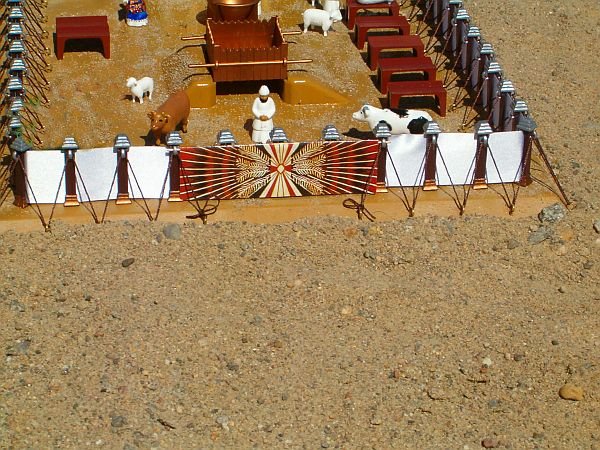
There was only one way into the Tabernacle of Moses, and it was through a curtain-door. This curtain-door of the outer court curtain-fence contained three colors woven into white linen fabric: blue, purple, crimson, and white. These four colors had deep prophetic significance.
These four colors prophetically and symbolically speak of the different attributes of Yeshua, whom Scripture likens to the door of our salvation (John 10:1–18). When combined, they form a full picture of Yeshua, the Redeemer and Savior of Israel as well as those people from the nations, who will be brought to him by the preaching of the gospel, and then will be grafted into the commonwealth or nation of Israel and its covenants with Elohim (Eph 2:11–19 cp. Rom 11:11–32). Only through Yeshua can man come to the Father, have salvation (John 14:6; Acts 4:12), eternal life and inhabit the glorious New Jerusalem as prophetically pictured by the glory cloud over the Holy of holies in the tabernacle. The four colors also correspond to the four faces of the living beings around the throne of Elohim (Ezek 1).
- The color crimson symbolizes the human aspects of Yeshua, for red is the color of man and red clay from which YHVH created man (Heb. adam meaning “ruddy, red”; cp. adama meaning “earth”). Some Bible commentators believe this points to the Gospel of Mark, which reveals the nature of Yeshua at the pashat (referring to “the simpleor plain level”) of biblical understanding. Some see this as corresponding to the ox cherubim and the tribe of Ephraim, which had on its banner an ox. According to Hebrew roots commentator and linguistic scholar James Trimm, the Gospel of Mark presents the Messiah as the servant (i.e., the servant who purifies the goyim or people of the nations in Isa 52:13, 15) and is the “my servant the Branch” of Zechariah 3:8, who is symbolized by the face of the ox in Ezekiel chapter (the ox being a servant, a beast of burden). Mark does not begin with an account of the birth of Messiah as do Matthew and Luke because, unlike the birth of a King, the birth of a servant is unimportant, all that is important is his work as a servant which began with his immersion by John. Thus Mark’s simplified account omits any account of Yeshua’s birth or preexistence and centers on his work as a servant who purifies the people of the nations.
- The color white symbolizes the righteousness of Yeshua. Some Bible commentators believe this points to the Gospel of Luke which reveals the nature of Yeshua at the remez (referring to “the hint”) level of biblical understanding. Some see this as corresponding to the man cherubim in Ezekiel chapter one and the tribe of Reuben, which had on its banner a man. Trimm states that Luke wrote a more detailed account for the high priest Theophilus (a Sadducee). The Sadducees were rationalists and sticklers for details. Luke presents Yeshua as the “Son of Man” and as “the man whose name is the Branch” (Zech 6:12), who is presented as a high priest and is symbolized by the face of the man in Ezekiel 1. Luke wants to remind by remez (or by implication) the high priest Theophilus about the redemption of the filthy high priest Joshua (Zech 6) and, therefore, its prophetic foreshadowing of a “man” who is a Messianic “Priest,” and who can purify even a high priest.
- The color purple symbolizes the regal or kingly aspects of Yeshua. Some Bible commentators believe this points to the Gospel of Matthew, which reveals the nature of Yeshua at the drash (or the allegorical or homiletical) level of biblical understanding. Some see this as corresponding to the lion cherubim and the tribe of Judah, which had on its banner a lion. Trimm writes that Matthew presents his account of Yeshua’s life as a midrash (or sermon) to the Pharisees, as a continuing story tied to various passages from the Tanakh (for example Matt 2:13–15 presents an allegorical understanding of Hos 11:1). As a drash level account of Yeshua’s kingly role, Matthew also includes a number of parables in his account. Matthew presents Messiah as the King Messiah, the Branch of David (Jer 23:5–6 and Is. 11:1f) as symbolized by the face of the lion in Ezekiel 1. Moreover, the lion corresponds to the tribe of Judah (Gen 49:9), and Scripture calls Yeshua “the Lion of the tribe of Judah” (Rev 5:5).
- The color blue symbolizes the heavenly or divine aspect of Yeshua the Messiah. Some Bible commentators believe this points to the Gospel of John as revealing the nature of Yeshua at the sod (or the mystical) level of biblical understanding more than the other Gospels. Some see this as supposedly corresponding to the eagle cherubim and the tribe of Dan, which supposedly had on its banner an eagle, although the scriptural proof for this seems to be lacking. According to Trimm, John is addressing the mystical Essene sect and concerns himself with mystical topics like light, life, truth, the way and the Word. John includes many sod-level interpretations in his account. For example John 1:1 presents a sod–level understanding of Genesis 1:1. John 3:14; 8:28 and 12:32 present a sod–level understanding of Numbers 21:9, and John 6:35–40, 50–58 of Exodus 16 with its account of the manna. (All of Trimm’s references were from his now defunct internet site http://www.jios.org/The%20Synoptic%20Solution_jt.html.)
The Altar of Sacrifice (Exod 27:1–8)
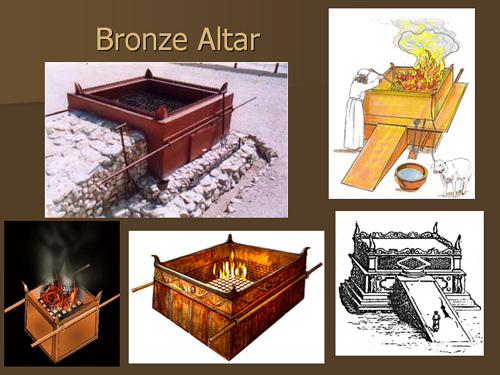
Just inside the door of the tabernacle was the altar of sacrifice. It was constructed of acacia wood overlaid with bronze. These materials are biblical prophetic symbols of Yeshua’s humanity (i.e., the wood) and his bearing the judgment for men’s sins on the cross (i.e., the bronze).
The blood of an animal that was sacrificed on the altar was poured out on the ground at the base of the altar. This prophetically pictured Yeshua shedding his blood at the cross for man’s redemption.
Two lambs were offered at the altar morning and evening (Exod 29:38–42). This pictures man’s need to come humbly before our Father in heaven morning and evening in prayerful devotion as living sacrifices to confess one’s sins as well as to praise, worship and thank him (Ps 51:16–17; Heb 13:15; 1 John 1:7–9).
Continue reading →Have YOU Fallen for the Church’s BIG Lie?
For certain, you will never hear this message preached in your church, but your salvation and eternal depends on knowing the truth of what the Bible calls “the lie”. If you fall for this BIG LIE, it can damn you eternally. The message of this video is backed up by the Truth of the Scripture, the Word of Elohim. Ignore it at your own peril. This is neither understatement nor hyperbole. It is not fear porn, because I have nothing to sell you, and there is nothing in it for me personally by preaching this message. It is simply the Truth that needs to be heard. Period.
Bible Truths the Mainstream Church Fails to Teach (Pt 1)
In this video, we bring to your conscious awareness a number of fundamental and important Bible truths that mainstream Christianity largely fails to teach. They include, among others things, a fundamental aspect of the basic gospel message, the false Jew-Gentile paradigmatic view of the New Testament, the truth of the kingdom of Elohim (God) and the Millennium, some things Elohim said NOT TO FORGET, but that the church has forgotten, as well as what Elohim’s chief attribute is (it’s not what you’ve been incorrectly taught!). Part two of this subject will follow shortly with more Bible truths the church conveniently overlooks. So stay tuned…
The Seven Steps to Consecrating a Levitical Priest and How It Relates to YOUR Salvation
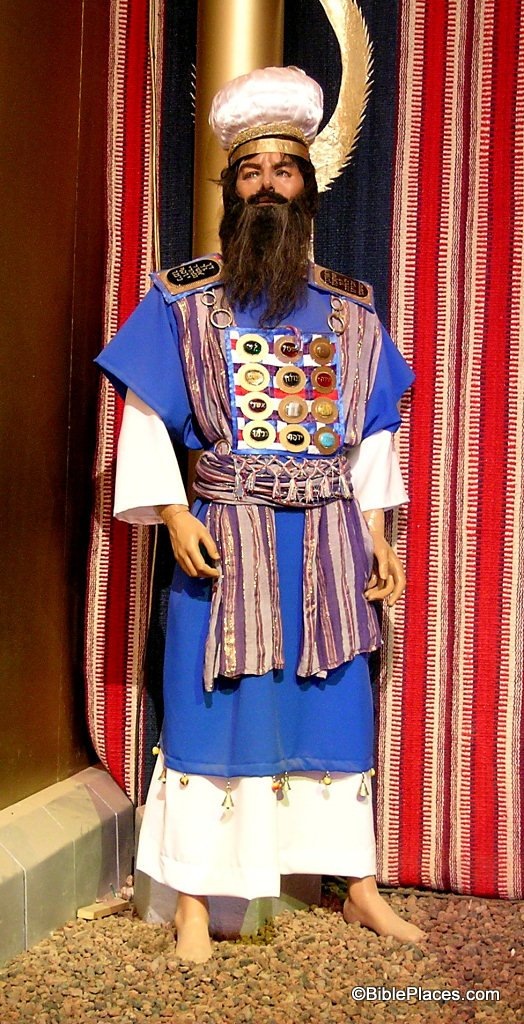
The Tabernacle of Moses is a fascinating study at many levels, for it is like the facets of a beautiful diamond that reflect light from many angles. With respect to the Tabernacle of Moses, it reflects the glorious light of YHVH Elohim’s Truth in a splendid and multi-dimensional form. What we present here on the tabernacle is merely a thimble full out of an ocean of knowledge pertaining thereto.
In this study on the Tabernacle of Moses, we will look at the seven, pre-qualifying ritualistic steps that Elohim required of a Levitical priest in order to minister in the tabernacle. We will then compare that with the seven steps that the Bible in the Testimony of Yeshua (or New Testament) requires a person to take in order to become a disciple of Yeshua and a child of Elohim. Scripture refers to such a person as a member of “the royal priesthood” (1 Pet 2:9), or a kingdom of priests under King Yeshua (Rev 1:6; 5:10; 20:6), which harkens back to the Levitical priesthood of old during the time of the tabernacle. Amazingly, the steps to consecrating a priest in the Tabernacle of Moses were written some 1,500 years before the New Testament was penned, and, therefore, are amazingly prophetic down to the last detail of what was subsequently required of the saint as we shall now see.
The number seven is a biblically symbolic number signifying completion or perfection, and the Bible contains numerous examples of this. The seven steps required to consecrate a person for service before YHVH Elohim in the Tabernacle of Moses is merely one such example. We find these seven outlined in Exodus chapters 28 and 29 along with Leviticus chapter eight. Let us now take a quick look at each of these steps and compare them with the steps that the Testimony of Yeshua now requires a person to take to receive salvation and inclusion in the everlasting kingdom of Elohim.
Step One
Aaron an his sons were taken from among the children of Israel ( Exod 28:1). This was a divine calling. Aaron and his sons did not choose to be Elohim’s priests. Rather, he selected them out of the tribes of Israel and they merely responded to his call. This prefigures divine election or selection (see John 15:16). YHVH Elohim calls each person to follow him; it is then up to each individual to choose whether to respond to the call. No human chooses Elohim until he first chooses them. This is a major biblical truth that the Christian church often overlooks and fails to teach about, even though Yeshua and his stressed its importance.
For many are called, but few are chosen. (Matt 22:14)
To all who are in Rome, beloved of Elohim, called to be saints: grace to you and peace from Elohim our Father and the Lord Yeshua the Messiah. (Rom 1:7)
And we know that all things work together for good to those who love Elohim, to those who are the called according to His purpose. (Rom 8:28)
Moreover whom He predestined, these He also called; whom He called, these He also justified; and whom He justified, these He also glorified. (Rom 8:30)
Elohim is faithful, by whom you were called into the fellowship of His Son, Yeshua the Messiah our Lord. (1 Cor 1:9)
For you see your calling, brethren, that not many wise according to the flesh, not many mighty, not many noble, are called. (1 Cor 1:26)
But as Elohim has distributed to each one, as the Lord has called each one, so let him walk. And so I ordain in all the churches. (1 Cor 7:17)
There is one body and one Spirit, just as you were called in one hope of your calling. (Eph 4:4)
Therefore we also pray always for you that our Elohim would count you worthy of this calling, and fulfill all the good pleasure of His goodness and the work of faith with power… (2 Thess 1:11)
[T]o which He called you by our gospel, for the obtaining of the glory of our Lord Yeshua the Messiah. (2 Thess 2:14)
Fight the good fight of faith, lay hold on eternal life, to which you were also called and have confessed the good confession in the presence of many witnesses. (1 Tim 6:12)
[W]ho has saved us and called us with a holy calling, not according to our works, but according to His own purpose and grace which was given to us in the Messiah Yeshua before time began… (2 Tim 1:9)
And for this reason He is the Mediator of the new covenant, by means of death, for the redemption of the transgressions under the first covenant, that those who are called may receive the promise of the eternal inheritance. (Heb 9:15)
But you are a chosen generation, a royal priesthood, a holy nation, His own special people, that you may proclaim the praises of Him who called you out of darkness into His marvelous light. (1 Pet 2:9)
For to this you were called, because the Messiah also suffered for us, leaving us an example, that you should follow His steps. (1 Pet 2:21)
But may the Elohim of all grace, who called us to His eternal glory by the Messiah Yeshua, after you have suffered a while, perfect, establish, strengthen, and settle you. (1 Pet 5:10)
[A]s His divine power has given to us all things that pertain to life and godliness, through the knowledge of Him who called us by glory and virtue… (2 Pet 1:3)
Jude, a bondservant of Yeshua the Messiah, and brother of James, to those who are called, sanctified by Elohim the Father, and preserved in Yeshua the Messiah. (Jude 1:11)
As should be obvious from this long list of Scriptures (and many more could be given), Elohim selects out of the masses of humanity those who will be his disciples. The church’s teaching that humans in their sinful and unregenerate state choose “to accept Jesus” as if they were initiating the process is totally erroneous. Again, humans do not choose him; rather, it is simply up to each of us to respond to his call, and then to continue in it.
It is a mystery of heaven why YHVH chooses some people and not others. But may those saints who have been called consider their calling a divine honor and privilege, be humbly thankful for it, and take their calling seriously for the amazing and undeserved gift that it is. For as Peter instructs the saints, “Therefore, brethren, be even more diligent to make your call and election sure, for if you do these things you will never stumble,” (1 Pet 1:10)
Step Two
Aaron and his sons were brought into the door of the tabernacle (Exod 29:4). As is apparent to those who have studied the Tabernacle of Moses, all of its aspects points to the Person and work of Yeshua the Messiah, who would come to the earth some 1,500 years later. Moreover, the tabernacle contains within it the seven steps that a person must take in order to come out of this world and his or her sinful state of separation from the Creator, and to come into a personal relationship with their Father in heaven through Yeshua the Messiah. As such, the door of the tabernacle is the only portal through which the priests of old had to enter to begin their spiritual service to Elohim. Similarly, that door prophetically symbolized the saint coming into a relationship with their Father in heaven through Yeshua the Messiah, who is the way to the Father and the door out of a world of sin and out of each person’s own sinful condition.
Continue reading →Tetzevah—The 7 Steps to Getting “Saved” (The Tabernacle of Moses Series)
The Tabernacle of Moses is a fascinating study with many levels and facets of understanding. One of them is the seven steps in the consecration of a Levitical priest in order to minister in the presence of YHVH Elohim. These steps, delineated 1,500 years before the birth of Yeshua and the writing of the New Testament, prophetically predict the seven steps that followers of Yeshua the Messiah (Jesus Christ) must take in order to “get saved,” that is, to come into a spiritual relationship with their Father in heaven through Yeshua the Messiah as presented in the Gospels and writings of the apostles.
Terumah–Tabernacle of Moses Intro & YOU
Why does the mainstream Christian hardly if ever teach about the Tabernacle of Moses? After all, everything in it points to Yeshua/Jesus the Messiah, the cross and the gospel message. Moreover, the Bible declares that, “Your way, O Elohim, is in the sanctuary [or Tabernacle of Moses],” (Ps 77:13). Studying the tabernacle reads like a multidimensional, all human senses involved, heaven and earth inter-relational gospel tract shows humans how to go from a state of sin and unholiness into a holy and righteous personal relationship with their Creator that will last into eternity. Learn about this and much more in this video. For a fuller study on the Tabernacle of Moses, go to https://www.hoshanarabbah.org/pdfs/ta… for a free article.

